Australian Animals: What You’ll See Down Under
A highlight of any Australia vacation is meeting the unique Australian animals! Whether you’re visiting a wildlife sanctuary, watching kangaroos hop freely in the wild, cuddling a koala, or swimming with whale sharks, there are so many opportunities to experience Australia’s unique wildlife.
Here are some of the most iconic animals you’ll see in Australia:
Kangaroos & Wallabies
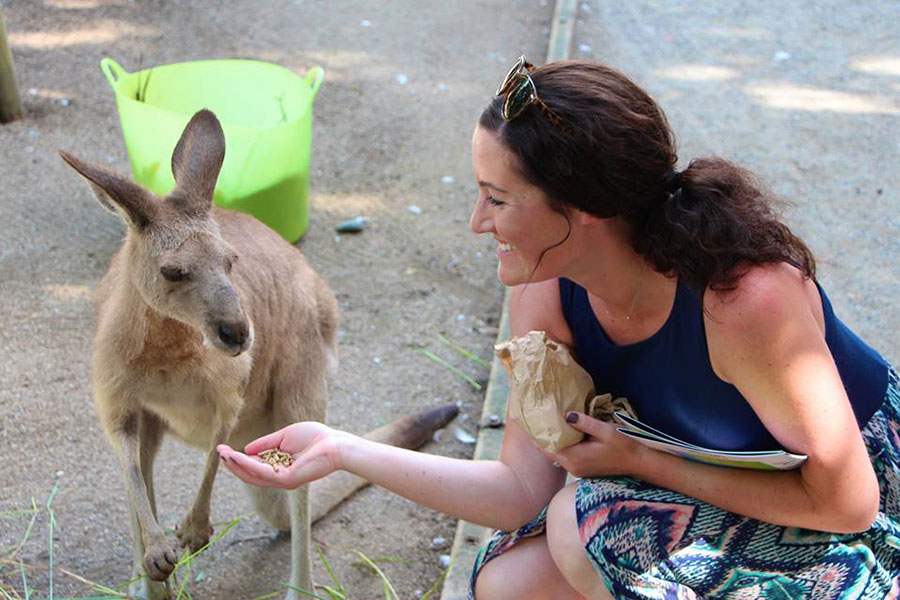
Photo courtesy of Ellen Hoffman
These iconic Australian animals are, of course at the top of the list! Australia has 55 native species of kangaroos and wallabies. They look very similar but have a wide range of sizes; wallabies usually look like a kangaroo, but smaller.
There’s no shortage of places to see wild kangaroos in Australia, but our favorite is Kangaroo Island. Over a third of the land on this southern island is protected in nature reserves. At Southern Ocean Lodge, one of the complimentary signature experiences is “Kangas and Kanapes,” where you can enjoy 5-star cuisine and bubbles while watching the roos hop around at dusk.
Koalas
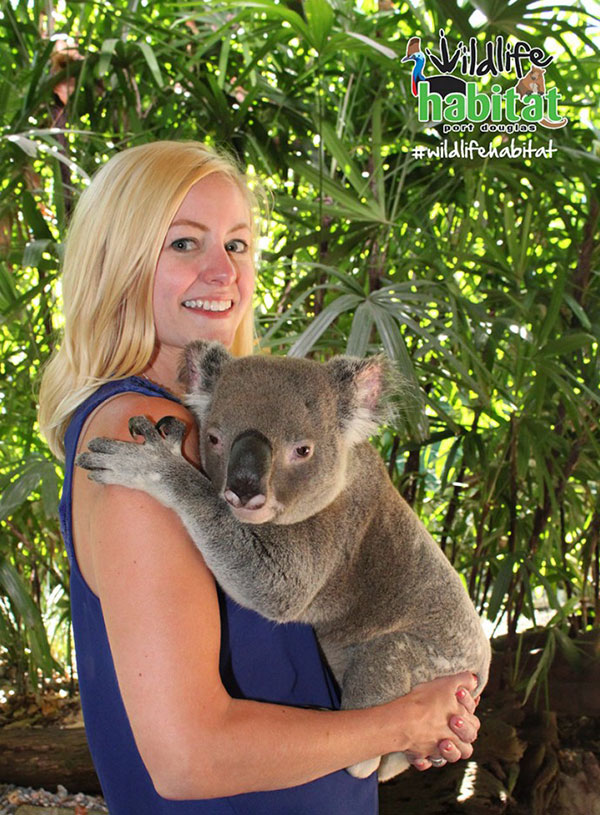
Photo courtesy of Laura Tober
Who doesn’t love cute koalas?! You can find these adorable animals all over eastern Australia—yet their population is in steep decline, and they are actually listed as vulnerable (one step below endangered).
You can get your picture taken with a koala at Wildlife Habitat Port Douglas. This is a great activity for families visiting the Great Barrier Reef! If you want to get more adventurous and see them in the wild, take a tour with our mates at Echidna Walkabout Nature Tours. Echidna Walkabout helps fund wild koala conservation, so by taking the tour, you’ll be helping the animals.
Quokkas
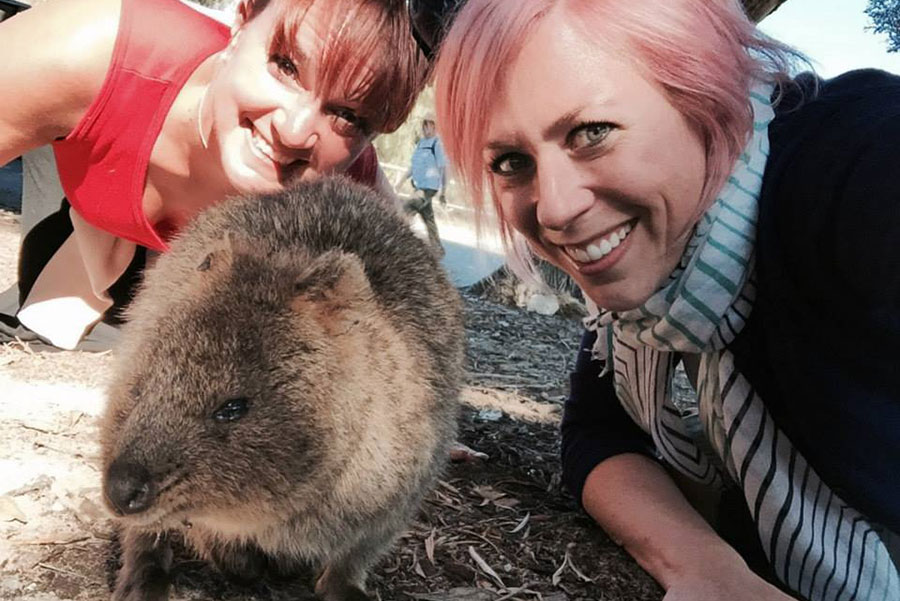
Photo courtesy of Shannon Bradley
These little guys’ happy smiles make them some of the cutest Australian animals! Quokkas are some of the smallest members of the macropod family (aka “big foot”), which includes kangaroos and wallabies. You can get an Instagram-worthy quokka selfie on Rottnest Island off the coast of Perth. But remember: while quokkas look cute and cuddly, they are still wild animals, and it’s illegal to actually touch them.
Wombats
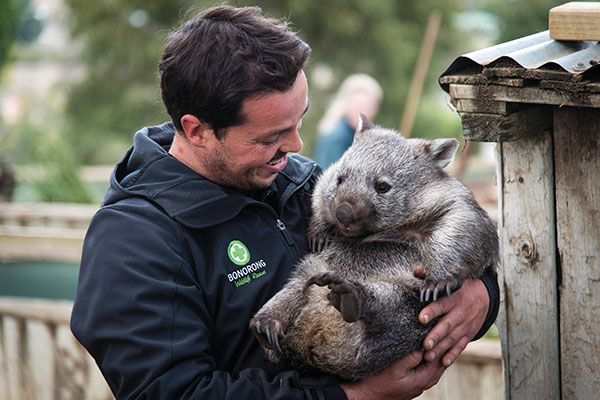
Wombat at Bonorong Wildlife Sanctuary. Image: Tourism Tasmania
Wombats are some of the lesser known Australian animals, but once you get to know these waddling marsupials, they just might be your new favorite! Wombats are very short and sturdy, and they’re some of the world’s best diggers. Fun fact: their poo is square thanks to their extremely long digestive system.
Wombats can live up to 30 years, but in the wild, most of them survive only 3-5 years. There are some great sanctuaries you can visit that rehabilitate injured and orphaned wombats and release them into the wild. One of our favorites is Bonorong Wildlife Sanctuary in Tasmania. Here, you can even take a private after-hours tour and hand-feed the wombies!
Quolls
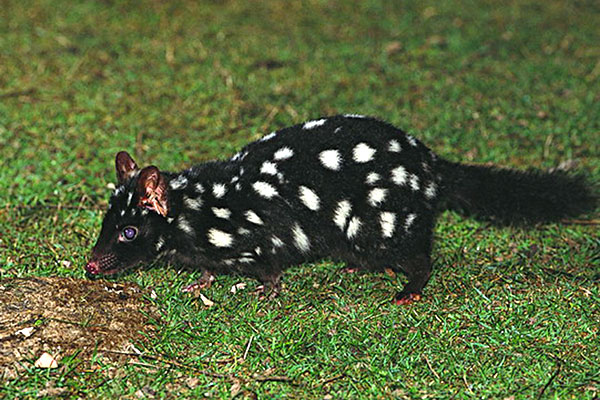
Black quoll. Image: Pepper Bush Adventures
There are four species of quoll in Australia, and while they all look a bit different, each species has distinctive white spots. You might mistake these Aussie critters for some type of rodent, but they’re actually carnivorous marsupials that eat birds, reptiles, and sometimes other furry creatures.
Quolls like to come out at night and can be shy around humans. One of our favorite wildlife experiences is a campfire dinner with our mates at Pepper Bush Adventures in Tasmania. While enjoying a delicious meal in the remote wilderness, you’ll see the nocturnal creatures (including quolls) come to life and start wandering around your camp!
Tasmanian Devils
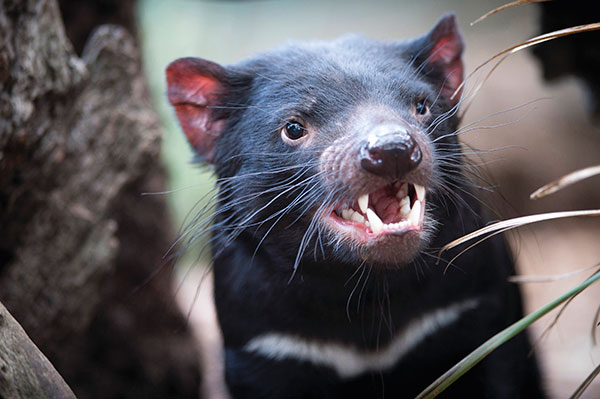
Tasmanian devil at Bonorong Wildlife Sanctuary. Image: Tourism Tasmania
You may know the Tasmanian Devil as a Looney Toons character, but it’s a real live Aussie critter, too! Tassie devils are the size of a small dog but have a nasty reputation. When they’re threatened, they’ll make frightening growls and screams. Imagine early settlers hearing those devilish sounds out in the bush at night and it’s easy to see where the name comes from!
Tasmania is the only place in the world where you’ll find these rare creatures in the wild. But don’t be too scared about meeting them—they’re quite shy and only scream and growl when they feel threatened.
At the after-hours Bonorong Wildlife Sanctuary tour, you can feed the Tasmanian devils and play a game of tug of war over their food!
Platypuses & Echidnas
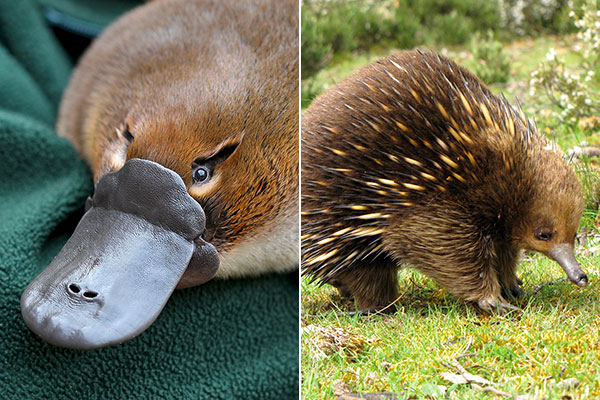
Left – Platypus at Healesville Sanctuary. Image: Yarra Valley Tourism. Right – Echidna. Image: Tourism Tasmania
Platypuses and echidnas are the world’s only two species of monotremes or mammals that lay eggs. You’ve probably seen a platypus with its duck bill, otter body, and beaver tail. They’re difficult to see in the wild, but your best bet is in a quiet riverbank in the eastern coastal areas.
Echidnas are also strange-looking creatures. They have spines like porcupines, beaks like birds, a pouch like a kangaroo, and they lay eggs like reptiles. Fun fact: Baby echidnas are called puggles and are very cute!
You can see both of these unique Australian animals (and many more) at Healesville Sanctuary outside of Melbourne.
Sea Turtles
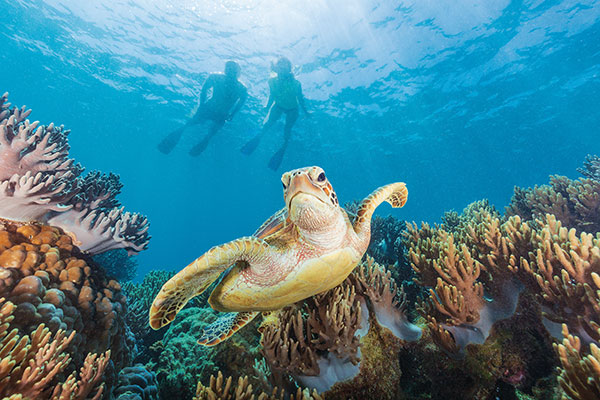
Turtle on the Great Barrier Reef. Image: Tourism & Events Queensland
There’s nothing like swimming alongside a turtle in the Great Barrier Reef! Sea turtles can be found in many Australian waters, but the Great Barrier Reef is one of the best places to see them year-round.
If you time your trip right, you might be treated to an even more amazing experience: watching turtle hatchlings make their way out to sea! A great place to see them is Heron Island, a fabulous resort located on the Great Barrier Reef. From September to March, hundreds of sea turtles come to nest on the beach, and you may even be able to see a mother digging a hole for her egg. The little hatchlings usually begin to break out of their shells in December.
Large Marine Animals
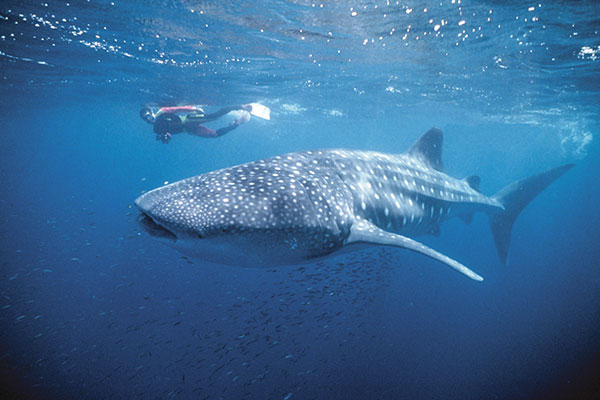
Swimming with whale sharks. Image: Tourism Western Australia
Australia has thousands of miles of coastline, so it’s easy to see large marine animals like sharks, whales, dugongs (relatives of the manatee), and seals. Ningaloo Reef on the western coast is one of the best places in the world to swim with enormous whale sharks! Unlike whale shark tours in Mexico, these tours don’t require you to wear a life vest, so you can get right up close to the animals (just don’t touch them!).
You can swim with sea lions in Port Lincoln, a town on the southern coast. Meanwhile, various whales—including humpback and southern right whales—can be seen along the eastern and western coasts from May to November. And if you want to swim with dolphins, you can do so as an excursion from many major cities, including Sydney, Melbourne, Adelaide, and Perth.
Emus
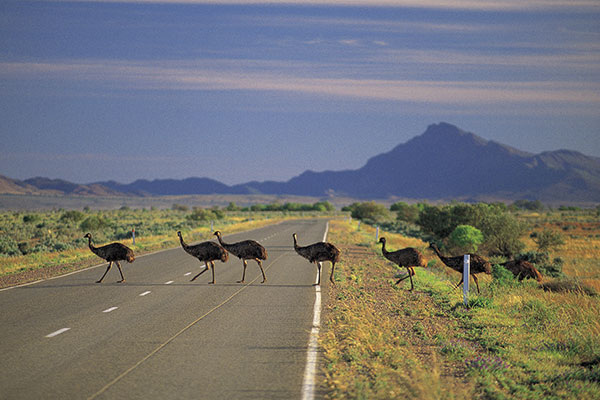
Emus near Flinders Ranges. Image: Tourism South Australia
These large, flightless birds are so common in Australia that they appear alongside the kangaroo on the Australian coat of arms. There was even an Emu War in the 1930s when struggling farmers in Western Australia were suddenly swarmed with emus that destroyed their crops.
Emus can grow over 6 feet tall and run more than 30 mph! You’ll find these strange Aussie creatures roaming freely in the scrubby bushlands of the outback. The Flinders Ranges in South Australia is a great place to see them in the wild against a beautiful backdrop.
Crocodiles
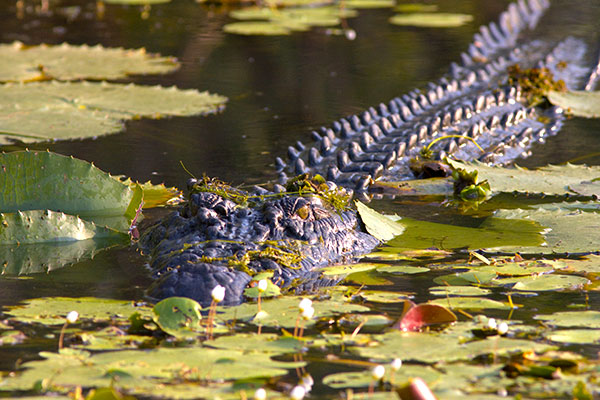
Crocodile in the water. Image: Tourism Northern Territory
Crocodiles might be some of the most famous Australian animals, thanks to the Crocodile Hunter and the beloved film Crocodile Dundee. You might think there are dangerous saltwater crocs roaming all over Australia, but they’re mostly found in the northern outback.
This is one Aussie animal you probably don’t want to interact with! However, its natural habitat is absolutely gorgeous and certainly worth exploring. Kakadu National Park, in particular, features a lot of the rugged red escarpments, rushing waterfalls, and secluded swimming holes you’ve seen in the movies. We recommend exploring with a guide who knows the area well—ask us about some of our favorite Kakadu tours!
Ready to be planning your vacation to meet Australia’s amazing animals? Read about our Top 10 Wildlife Tours in Australia, or give us a call at 888-367-0933 to begin planning the adventure of a lifetime!